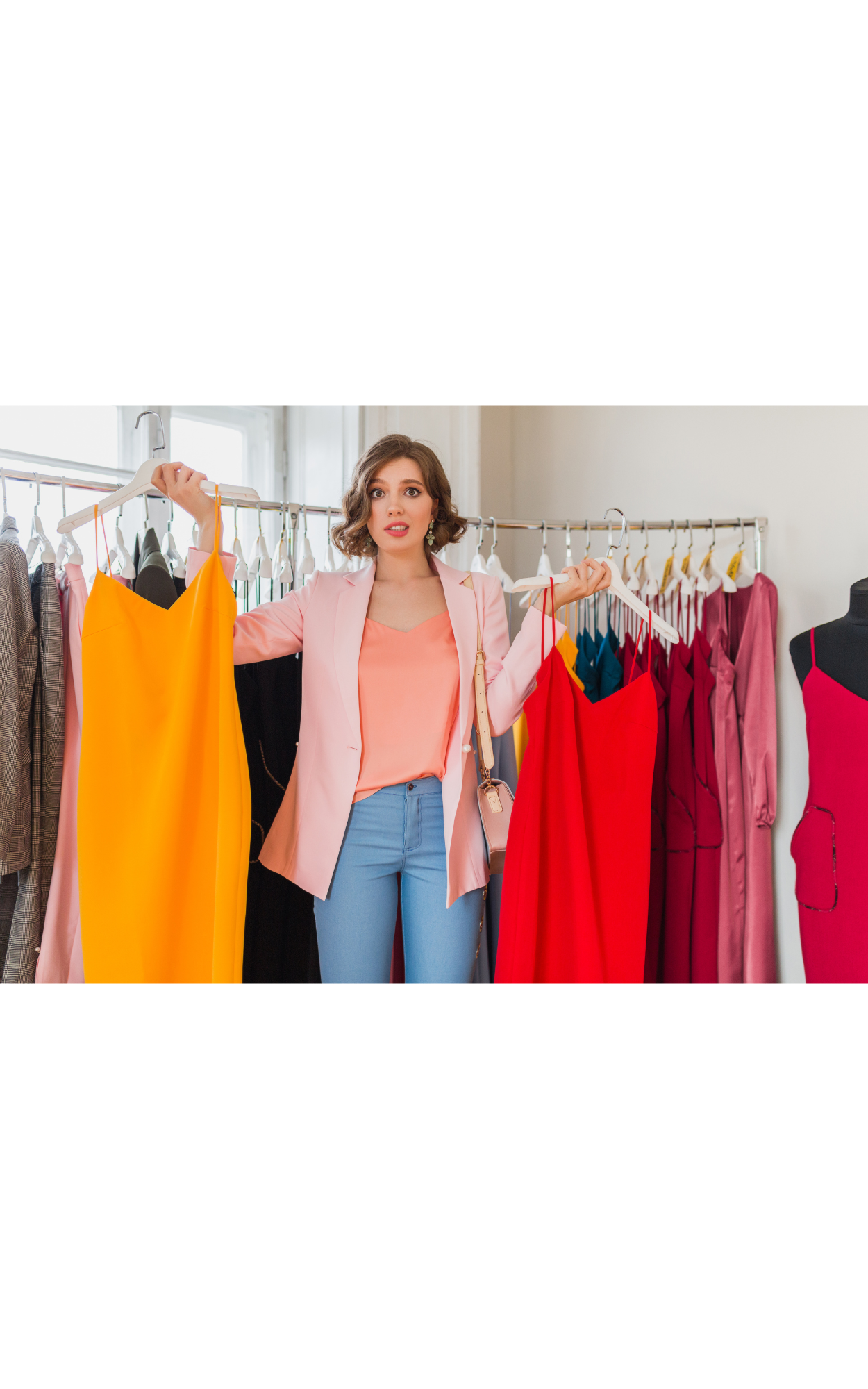

Tooba Siddiqui
Fri Nov 21 2025
7 mins Read
Well, it didn’t take AI long enough to fasten the glacial growth pace of the fashion industry — wasn’t thrilling but still exciting enough. While online shopping increased the demand for innovative solutions, AI paved the way for a myriad of possibilities.
One of the most interesting advancements was AI clothes swap apps that allow you to determine your style sense and experiment with new trends. Wondering how a cheetah print gown would look on you? Swap clothes with AI and find the right attire! Let’s explore the business-y aspect of AI in the fashion industry.
Why the Slower Adoption of AI in Fashion?
Like any other industry, the fashion industry and business have their own complexities and challenges when it comes to the AI revolution. The fashion business has always been driven by human expertise, creativity, and expression. Human intuition and artistic visions shaped the traditions of this business sector, further complicating the AI automation.
With a plethora of trends, design, styles, body types, preferences, and cultural differences diversifying these businesses, predicting consumer behavior and liking becomes highly subjective. Additionally, the data needed for AI has to be structured, which wasn’t/isn’t the case with the fashion-related data. For instance, a business could have sales, socials, inventory, and customer preference data in isolated silos, raising the cost of implementation.
Apart from the technicalities, consumer behavior played a pivotal role in embracing AI-powered tools. While virtual try-on apps have been around for quite some time, consumers haven’t been trusting the AI results. However, with improved user experience of many apps, the tide is finally turning in favor of AI.
Recommended read: Best Clothes Swap AI Apps
10 Ways to Use AI Clothes Swap in Business
1. Virtual Try-Ons and Online Retailers
Online shopping was a revolution of its own kind in the fashion industry. It saved us from the hassle of traveling all the way to the store just for an outfit. However, there was (and still is) one major issue: you can’t try on outfits till they are delivered. It results in customer frustration and increased refund requests. With AI clothes swap apps, online businesses can avoid these scenarios.
The advanced algorithms of apps like ImagineArt AI clothes changer superimpose outfits onto your image and create a realistic version of you donned in the chosen fit. It allows retailers and businesses to provide seamless and improved before-you-purchase and user experience.
AI clothes try-on apps can help increase customer satisfaction and lower return rates. The customers feel more confident about their purchases, and the businesses can enhance interactions with personalized recommendations.
2. Fashion Personalization with AI Outfit Generators
Nowadays, customers seek individuality; they want products tailored to their peculiar or particular style preference — enter AI outfit generator. These AI apps take personalization up a notch with features to create outfits through prompts and images based on body shape, style, and color schemes.
These AI outfit try-on apps showcase how an outfit will look on you. You can try a bunch of different outfits, from casual wear to formal attire, as these AI apps ensure a curated consumer experience.
Clothes swap AI apps can help increase customer loyalty and product ratings with accurate virtual try-ons. It allows users to make informed decisions and shop wisely.
3. Sustainability
With clothes swap AI apps, you can restyle and reuse different clothing items to create a whole new outfit. Using the reference images, you can pair up clothing pieces and virtually try on, without ending up with a style fail.
Through these AI apps, you get to test and improve the longevity of clothing pieces and sort out the ones you no longer want to keep. This allows you to reduce the need for new items while ensuring your outfit remains stylish and trendy.
It gives businesses an opportunity to exploit the potential of eco-conscious consumerism, producing clothes with betterquality and longer life. It can drive in environmentally conscious buyers and diversify the consumer base.
4. Virtual Fitting Rooms in Retail
AI virtual fitting room lets shoppers try on clothes without physically trying them on or touching them. Similar to the AI clothes swap technology, virtual fitting rooms create a 3D model of your body with accurate measurements as you stand in front of the camera or mirror in the store.
The AI technology will overlay the selected outfit and generate a 3D scanned model of yourself wearing that outfit. It can even suggest the right size based on measurements and offer color options to try on.
For businesses, this AI technology can improve customer engagement and foot traffic while reducing the risks of inventory damage.
5. Clothes Swap AI Apps and Small Businesses
For small and medium-sized businesses, standing out in this overcrowded fashion industry is quite a challenge. However, with innovative AI clothes swap apps, such businesses can have a leverage over some huge but technologically behind brands.
These apps can help boost sales and improve customer satisfaction with virtual try-on experiences, without the need to set up any brick-and-mortar store. With an AI clothes swap app, small businesses and startups can even streamline content creation and keep it fresh without any extra effort.
AI clothes swap app gives small brands an edge to compete in the digital landscape of the fashion industry. With these apps, brands can even create studio-grade product images at a relatively lower cost and time investment, without hiring any photographers, models, or renting locations.
6. Trend Prediction and Inventory Management
Without a doubt, AI can predict trends and future advancements with precision, be it in the fashion industry or the entertainment industry. AI can gather and evaluate large data from different fashion platforms and channels and forecast upcoming trends. It gives brands using the AI clothes swap apps a chance to stay ahead of the curve and launch products earlier than their competitors.
AI clothes swap apps and virtual fitting rooms brands can ensure the inventory remains unharmed regardless of how many shoppers try it on. With reduced return rates, brands can maintain a stable inventory level and lower the reverse logistics costs.
With these apps, businesses benefit from accurate trend forecasting, optimal product offerings, and well-managed inventory.
7. Virtual Fashion Shows and Events
Runways and fashion shows are the nucleus of any fashion brand and business. However, these events come with a rather hefty cost of studios, location, and models. With AI clothes swap app, small or medium-sized businesses can host fashion events sans the physical constraints.
These apps help such businesses to exhibit their products and collections in high quality and make it accessible to a much wider audience. The consumers can even try the outfits on virtually and give feedback.
Virtual fashion shows provide businesses with an affordable way to connect with their customers without worrying aboutlocation or production.
8. AI Clothes Swap Apps for Rental Businesses
Renting outfits for a special event or ceremony has become a trend in recent years. Rental businesses allow consumers to enjoy high-quality fashion without spending thousands of dollars on a single outfit. With AI clothes swap app, such businesses can streamline the process with tailored suggestions and damage-free inventory.
These AI apps can help rental businesses to maintain their available stock, without running out of size and color options for outfits. Using clothes swap AI apps, clothing rental services can even keep track of what’s trending and most popular among consumers.
AI clothes swap empowers rental businesses to provide consumers with convenience, flexibility, and improved personalization. It can lead to business growth and better customer satisfaction.
9. Data-Based Marketing Campaigns
Marketing is all about how well you connect and appeal to your audience. With clothes swap AI apps, brands can acquireaccurate data and insights on consumer preferences, trending styles, and online interactions to strategize their marketing campaigns.
A tailored marketing campaign resonates with the right audience, resulting in improved ROI, customer engagement, and overall sales. The more you know your audience, the better your stance in the fashion industry.
10. Virtual Styling Assistants
Styling an outfit is one of the underrated daily life struggles. With the AI clothes swap app, you can try multiple outfits at a time and pick the one that suits you the best. You can even use AI hairstyle changer to choose the right hairstyle for the selected outfit.
With such apps, businesses can offer comprehensive styling assistance to personalize the shopping experience and enhance customer loyalty and retention rate.
Recommended read: Personal Styling with AI Try-on Apps
Conclusion
Let’s face it: AI in fashion was inevitable; this is what the customers wanted. If you think only the traditional methods cankeep your brand successful, think again. AI isn’t just a fleeting trend; this is what the future entails. So, go ahead and embrace it. Let the algorithms be your trendsetters, and AI clothes swap apps be your virtual sales assistant.

Tooba Siddiqui
Tooba Siddiqui is a content marketer with a strong focus on AI trends and product innovation. She explores generative AI with a keen eye. At ImagineArt, she develops marketing content that translates cutting-edge innovation into engaging, search-driven narratives for the right audience.